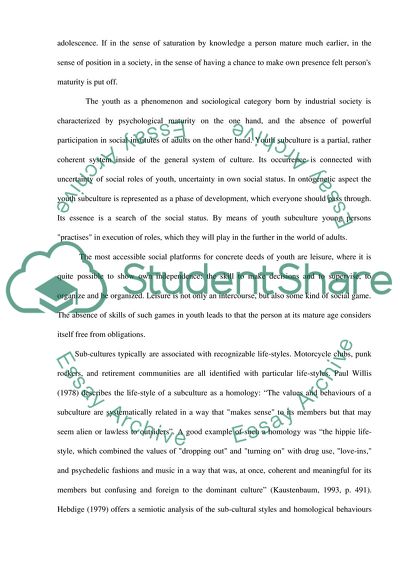Cite this document
(Youth Subcultures Assignment Example | Topics and Well Written Essays - 1500 words, n.d.)
Youth Subcultures Assignment Example | Topics and Well Written Essays - 1500 words. https://studentshare.org/culture/1710462-why-do-young-people-adopt-distictive-styles-why-do-the-styles-changes-so-rapidly
Youth Subcultures Assignment Example | Topics and Well Written Essays - 1500 words. https://studentshare.org/culture/1710462-why-do-young-people-adopt-distictive-styles-why-do-the-styles-changes-so-rapidly
(Youth Subcultures Assignment Example | Topics and Well Written Essays - 1500 Words)
Youth Subcultures Assignment Example | Topics and Well Written Essays - 1500 Words. https://studentshare.org/culture/1710462-why-do-young-people-adopt-distictive-styles-why-do-the-styles-changes-so-rapidly.
Youth Subcultures Assignment Example | Topics and Well Written Essays - 1500 Words. https://studentshare.org/culture/1710462-why-do-young-people-adopt-distictive-styles-why-do-the-styles-changes-so-rapidly.
“Youth Subcultures Assignment Example | Topics and Well Written Essays - 1500 Words”. https://studentshare.org/culture/1710462-why-do-young-people-adopt-distictive-styles-why-do-the-styles-changes-so-rapidly.


